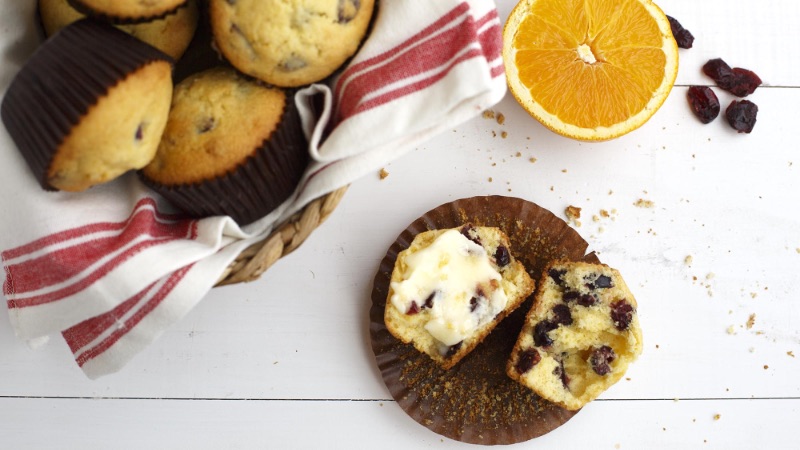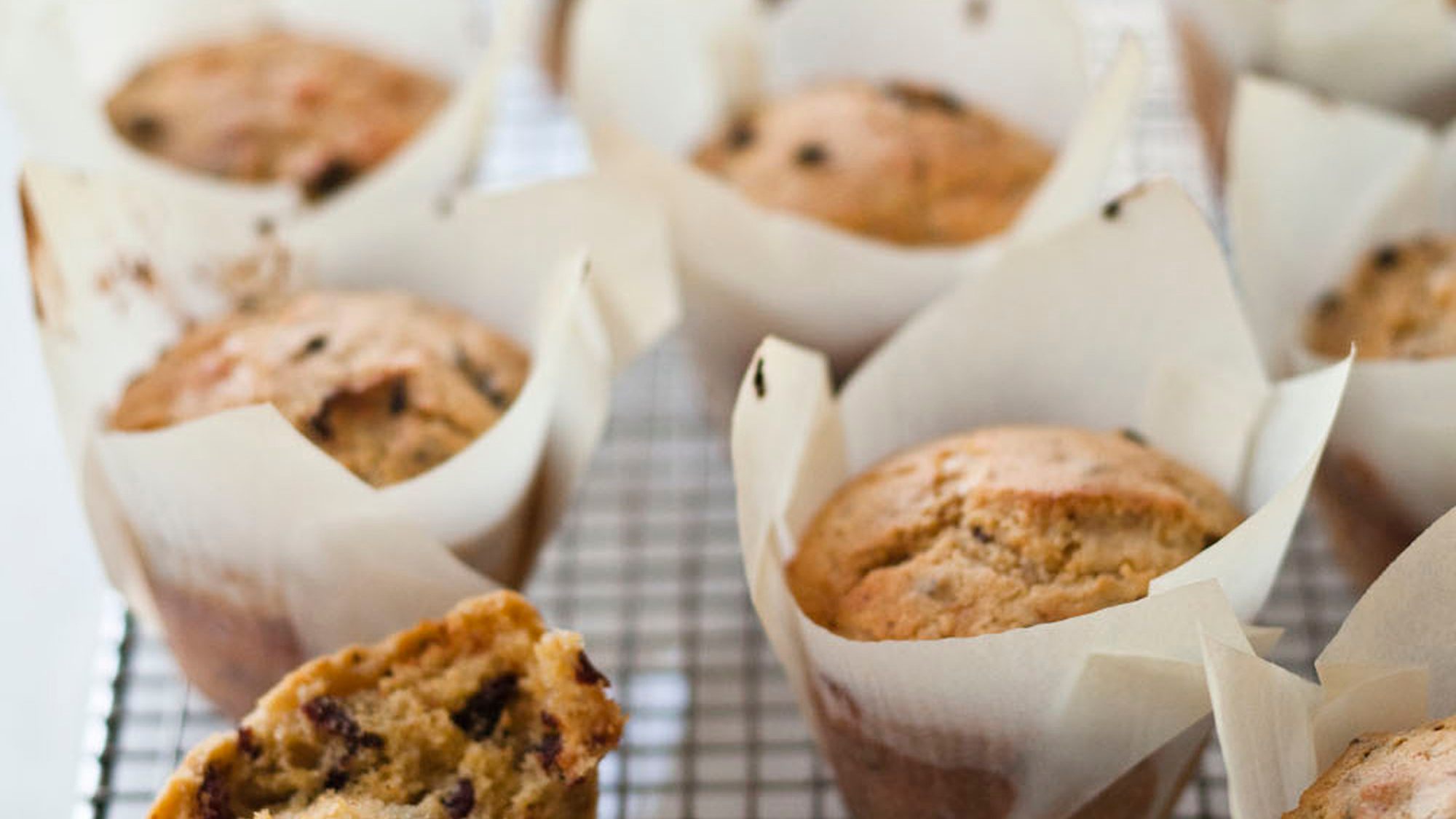My very first job when I was in high school was at a bakery down the street from where I grew up. In the midst of boxing up cakes, slicing bread and slinging donuts on Saturday mornings, I developed a deep love affair with crumb cake that opened my eyes to a world way beyond Entenmann's. The buttery, plush dough, the fat crumbs and powdered sugar were pure bliss.
This is a crumb-cake-meets-muffin combo that is directly inspired by the classic bakery breakfast cake. And like their inspiration, these muffins have a fine, delicate crumb with a buttery, vanilla flavor and a thick topping of sweet crumbs. Ready to make them your reality? Let's get started!
Photo: McCormick
Start with the basic muffin method
Even though these breakfast baked goods are inspired by a cake, we stir them together using the basic muffin method.
The muffin method is a standard procedure of mixing ingredients together in a specific order. It starts by mixing the dry ingredients together in one bowl, and the wet ingredients -- including the liquid fat -- separately in another bowl. The wet ingredients are added to the dry ingredients and gently stirred together until just mixed.
If you still see lumps after mixing, that's OK. A gentle hand here prevents the overdevelopment of gluten and gives you a nice, craggy crumb. This distinction gives you a muffin and not a cupcake, which is exactly what we're after. Your batter will be a bit thinner than a creamed batter where air is incorporated in, so don't hesitate when you notice this difference.
Photo: McCormick
The best bakery-style crumb muffins start with cake flour
To create a muffin with the soft, light qualities of its crumb cake inspiration, this recipe uses cake flour in place of all-purpose flour. Cake flour is more finely ground and has less protein, which leaves the muffins with a fine, light crumb and soft texture. Using cake flour is an easy way to avoid heavy, dense muffins even if you end up stirring just a bit too much.
How to make the best crumb topping
I hate to play favorites, but I'm going to do it anyway. The crumbs are the very best part of these muffins. Not to be confused with streusel, this topping covers the muffins with a layer of big, densely packed nuggets that are sweet and buttery with a subtle cinnamon twist.
The crumb topping is a mixture of cake flour, white and brown sugar, melted butter, and cinnamon. It comes together as thick, wet chunks rather than a bowl of dry crumbles. When preparing the topping, mix just until the ingredients are well-combined -- and be sure not to overmix, as more mixing makes for smaller crumbs.
After spooning the crumb topping into each muffin well, it's crucial that you gently press the crumbs into the muffin batter. This ensures the topping stays firmly planted over the top of the muffins and won't fall off.
Photo: McCormick
Bakery-Style Muffins
Makes 12 standard-size muffins
For the crumb topping:
1/2 cup granulated sugar
1/2 cup packed light brown sugar
1 teaspoon ground cinnamon
1/4 teaspoon salt
10 tablespoons (5 ounces) unsalted butter, melted and cooled
1 3/4 cups cake flour
For the muffins:
2 1/2 cups cake flour
3/4 cup granulated sugar
1 teaspoon baking powder
1/2 teaspoon baking soda
1/4 teaspoon salt
12 tablespoons (6 ounces) unsalted butter, melted and cooled
2/3 cup buttermilk
2 large eggs
2 large egg yolks
2 teaspoons vanilla extract
1/4 cup powdered sugar
1. Arrange a rack in the middle of the oven and heat to 350 F. Line a standard 12-well muffin tin with paper liners, or coat the wells with butter or cooking spray; set aside.
2. Make the crumb topping. Whisk the granulated sugar, brown sugar, cinnamon and salt together in a medium bowl. Whisk in the butter until well-combined. Stir in the flour until the mixture just resembles a thick dough; set aside.
3. Whisk the flour, sugar, baking powder, baking soda, and salt together in a large bowl.
4. Whisk the butter, buttermilk, eggs, egg yolks and vanilla together in a medium bowl until combined.
5. Fold the wet ingredients into the dry. Pour the wet ingredients into the flour mixture and mix with a wooden spoon or rubber spatula until just combined; some lumps are fine.
6. Divide the batter among the prepared muffin wells, filling each one 3/4 of the way full. Divide the reserved crumbs among the muffin wells, and gently press them into the batter.
7. Bake until the muffins are golden-brown and a toothpick inserted into the center of a muffin comes out clean, 20 to 24 minutes. Cool the muffins in the pan for about 5 minutes, then transfer to a cooling rack to cool completely.
8. Dust the muffins with powdered sugar before serving.
Recipe notes: Keep the muffins in an airtight container at room temperature for up to five days. They can also be frozen for up to two months, and then thawed at room temperature.
This article is written by Kelli Foster from The Kitchn and was legally licensed via the Tribune Content Agency through the NewsCred publisher network. Please direct all licensing questions to legal@newscred.com.
![]()


